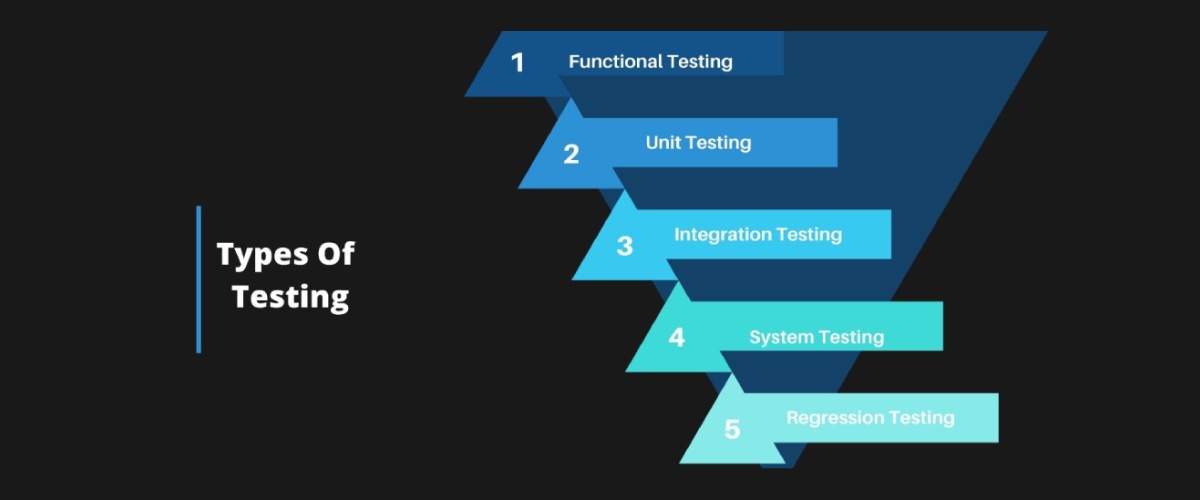Various Types of Software Testing
Software testers are aware of the various types of software testing. This mainly include testing such as functional testing, non-functional testing, automation testing, agile testing, and their sub-types, and so on.

Overview
Software testers are aware of the various types of software testing. This mainly include testing such as functional testing, non-functional testing, automation testing, agile testing, and their sub-types, and so on. Throughout the testing careers, we have all encountered various types of testing. We may have heard about some and worked on some, but not everyone is familiar with all kinds of testing.
Each type of testing have their own set of characteristics, benefits, and drawbacks. However, in this blog, we have covered almost every type of software testing that we encounter on a daily basis.
Different Kinds of Software Testing
Accessibility Testing :
Accessibility testing is the process of ensuring that your mobile and web apps are functional and usable for users with and without disabilities, such as vision impairment, hearing impairment, and other physical or cognitive conditions.
Acceptance Testing:
It actually ensures that the end-user can achieve the goals outlined in the business requirements, determining whether the software is ready for delivery. We can also refer them to as user acceptance testing.
Black Box Testing:
Black box testing also involves running tests against a system in which the code and paths are hidden.
End to End Testing:
End-to-end testing is a technique for testing the application's workflow from start to finish to ensure that everything works as expected.
Functional Testing:
Functional testing verifies that an application, website, or system is performing as expected.
Interactive Testing:
Also known as manual testing, interactive testing allows testers to create and facilitate manual tests. This is actually for those who do not use automation and collect results from external tests.
Testing for Integration:
Also known as manual testing, interactive testing allows testers to create and facilitate manual tests. We do this for those who do not use automation and collect results from external tests.
Testing for Integration:
Integration testing ensures that an integrated system as a whole meets a set of requirements. Moreover, it is performed in a combined hardware and software environment to ensure that the entire system functions properly.
Load Testing:
It is a type of testing where non-functional software testing process. They determine how a software application behaves when multiple users access it at the same time.
Non-functional Testing:
Non-functional testing verifies a system's readiness based on non-functional parameters (performance, accessibility, UX, etc.) that are never addressed by functional testing.
Performance Testing:
It investigates a software application's speed, stability, reliability, scalability, and also resource usage under a specified workload.
Regression Testing:
Regression testing is mainly to determine whether or not code changes break an application or consume resources.
Sanity Testing:
After bug fixes, sanity testing ensures that the bugs have been fixed and that these changes have introduced no new issues.
Security Testing :
They reveals system vulnerabilities and ensures that the software system and application are free of threats and risks. We design these test mainly to identify any potential flaws and weaknesses in the software system that could result in a loss of data, revenue, or reputation among employees or outsiders to a company.
Single User Performance Testing:
Single user performance testing ensures that the application under test performs satisfactorily within the specified thresholds without putting the system under stress. When the system is under load, we can use this benchmark to define a reasonable threshold.
Smoke Testing:
This type of software testing validates a software application's stability; we perform them on the initial software build to ensure that the program's critical functions are operational.
Unit testing:
It is the process of checking small pieces of code. This we do mainly to ensure that the individual parts of a program work properly on their own, speeding up testing strategies and also help in reducing wasted tests.
White Box Testing:
White box testing entails testing the product's underlying structure, architecture, and code in order to validate input-output flow and improve design, usability, and security.
Three Test Methods
Manual Testing:
It is the most hands-on type of testing and we use at some point by every team. Of course, manual testing is challenging to scale in today's fast-paced software development lifecycle.
Automation Testing:
Test scripts and also specialized tools are used to automate the software testing process.
Continuous Testing:
This testing takes things a step further by applying the principles of automated testing in a scaled, continuous manner to achieve the most reliable test coverage for an enterprise.
Bottom Line
The Software Testing Types listed above are only a subset of testing. However, there is still a list of more than 100 different types of testing, but not all types of testing are used in all kinds of projects. As a result, we've gone over some of the most common software testing types commonly used throughout the testing life cycle. Do you enjoy reading this blog? Then please have a look at our blogs as well. Please do not hesitate to contact us if you have any questions. We are here to assist you! Check to visit our website to learn more about us and our services.